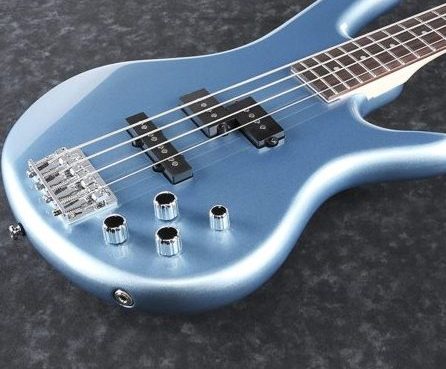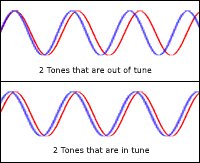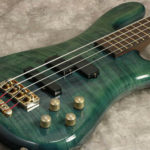Without getting into too many scientific details about sound and pitch, there are a few basic things to understand. How high or how low a pitch is depends on its frequency. Frequency is how frequently something (like a bass string) vibrates. It is the number of cycles something vibrates within a certain amount of time. The faster, or more frequently, something vibrates, the higher its pitch.
Tuning Your Electric Bass

This site contains affiliate links, which we receive a commission from any sale or purchase, and are of no cost to you. As a participant in the Amazon Services LLC Associates Program, affiliate links will redirect you to Amazon.com and its affiliate sites. Please read our DISCLAIMER for more information
Even if you have access to an electronic tuner, tuning a bass guitar by ear is a very important skill for a bassist to learn.

In Tune and Out-of-Tune
When you are tuning your bass strings, you are trying to match the frequency, or vibration pattern, of one note to another. If two notes are out-of-tune with one another, the vibration patterns clash. You should hear a wah-wah-wah sound from the two notes clashing.

When two notes are in tune, the vibration patterns match. This is what you’re trying to acheive when you tune your bass strings.
It’s best to de-tune/loosen your string a bit and practice by tuning up to the correct pitch. If you pass up the correct tuning note, you could over-tighten the string and break it. Start with your string loose and flabby until you get the hang of tuning your bass.
- With the bass string loose and flabby, your string should be well below the correct pitch. Play the bass tuning note and the bass string at the same time. Listen closely for the “wah-wah-wah” sound created by the out-of-tune notes.
- Slowly tighten the string by turning the tuning key. As the string gets more in tune, the speed of the wah-wah-wah sound will slow down.
- The string is in tune when you can no longer hear the wah-wah-wah sound. The waves are now in sync. If you pass the in tune point, the wah-wah-wah sound will start to speed up again.
- Tune all of your strings in the same way.
Tuning your bass is not hard, but it takes practice, like any other musical skill. If you have an electronic tuner, try tuning by ear first and then check your work with the tuner. With time you’ll be able to tune your bass without even thinking about it. Good luck.
Guitar & Gear Articles










